Best Projectors in 2025: Top 4K, Budget & Home Theatre Projectors Compared

Introduction — Why Projectors Are Still Worth It in 2025
Discover the best projectors in 2025 for home entertainment. Compare top models under ₹10,000, ₹25,000, and premium 4K options, with insights on resolution, brightness, and usability to find the perfect fit for your needs.
In 2025, projectors are a compelling alternative to TVs, offering massive screen sizes and cinematic experiences at a fraction of the cost of large TVs. Ideal for dark rooms and home theatre setups, projectors excel in delivering immersive visuals, though they may struggle in bright environments or with fast-paced content like sports.
This guide explores the key factors to consider when choosing a projector, from resolution and brightness to portability and audio quality, and recommends top models across various budgets to help you create the ultimate viewing experience.
Is a projector a replacement for a TV in 2025? Let’s take a look at that. Today, a projector could be a good option for you.
- If you can control the lighting in your room, projectors work best in dark conditions, and bright rooms can diminish the image quality significantly.
- If you need a large display beyond what current TVs can support, then a projector is a good option. TVs can become quite bulky and expensive as the sizes go up. The project can easily create this space of 250 in and above.
- If you do not need to watch very very fastpac sports or games, most projectors support only 60 HZ refresh rates for a large display. This causes motion blur in very fast space scenes.
In short, projectors can replace TVs for very specific use cases in dark environments; they are not the best choice in very bright environments or rooms with ambient lights. Now with that out of the way, let’s discuss the key things to consider when buying a projector.
Key Features to Consider Before Buying a Best Projectors
Let’s start with the aspects that determine the picture quality. First up, let’s talk about the size, like we discussed earlier, TVs are limited and how big they can get. So, if you prefer a big cinematic experience, a projector is the way to go.
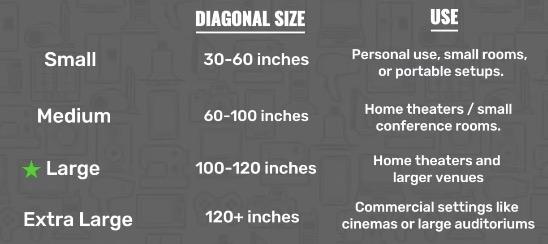
For larger sizes, you can choose to project directly on the wall or for a better experience, you can purchase a projector screen to mount on the wall or the ceiling. 100 to 120 in is the most common projection size in a home scenario.
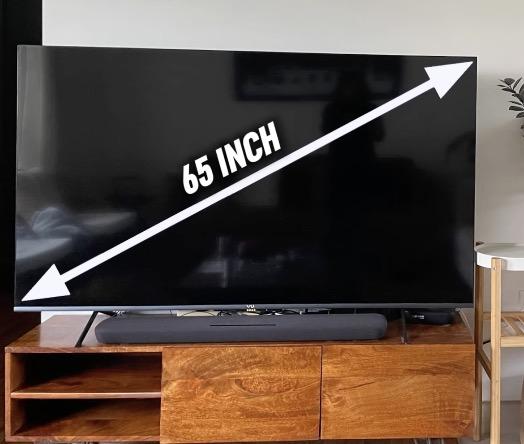
For reference, in the given image is a 65-inch TV, four such TVs placed in a rectangle that is only slightly bigger than a 120-inch projection, which is huge.
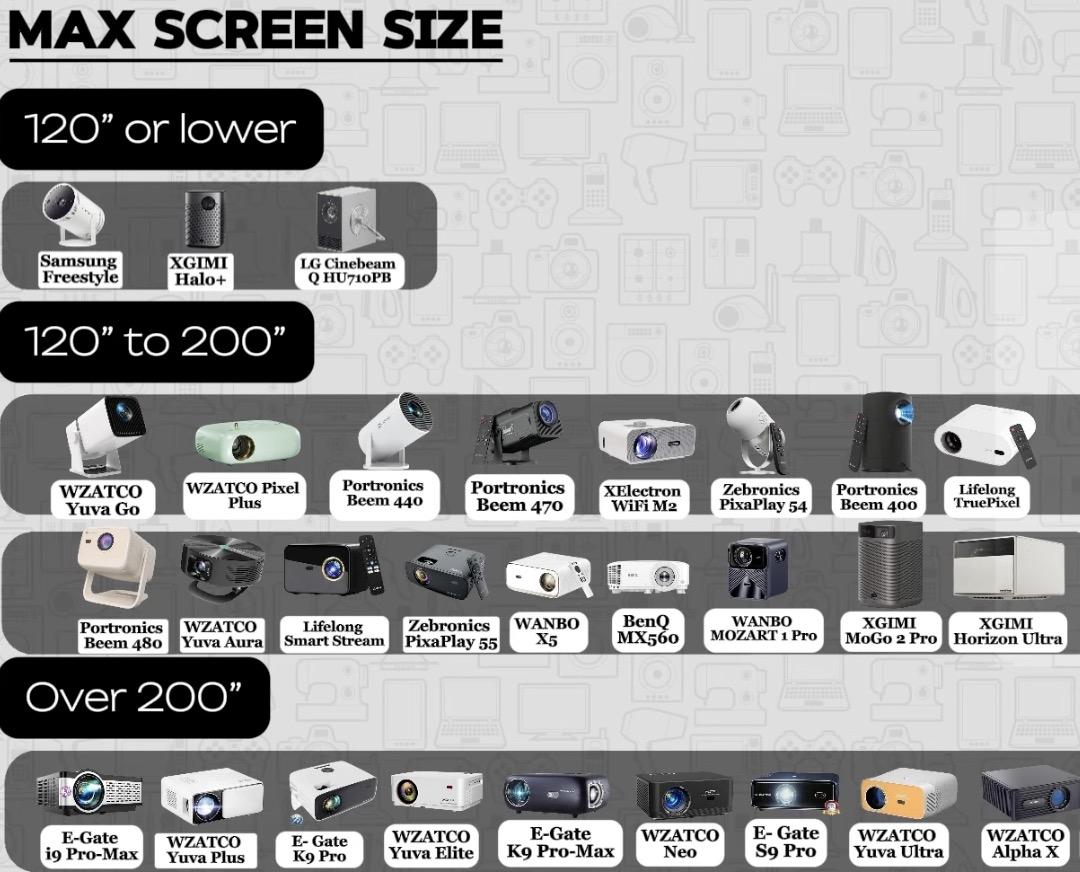
Now, except for the LG CineBeam and the Samsung Freestyle models that we’ve compared, which support a maximum size of about 100 inches, all other projectors compared Support over 120 inches in size. Remember, this is the diagonal size, not the width.
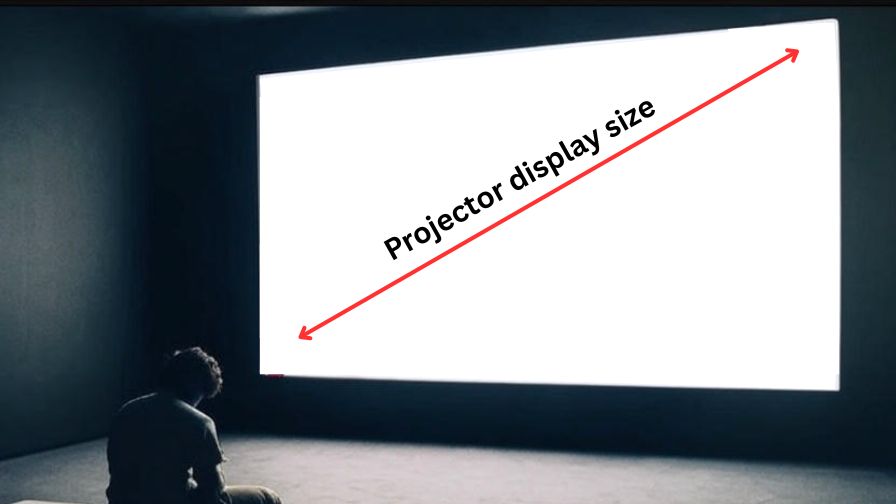
In addition to the display size, your choice of projector will also depend on the distance you can keep the projector from the wall that you’re projecting on. In general, some projectors publish a throw ratio, which shows how far the projector needs to be placed for the size that you want to project.
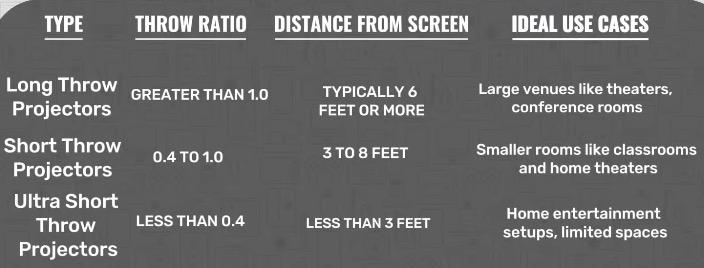
The smaller throw ratio is closer. It can go to the wall that you’re projecting on, and they are generally more expensive as well, most of the projectors. We have compared are short-throw projectors, which typically work in small to medium-sized Rooms.
Resolution and Image Quality of Best Projectors
Most projectors currently available in India have a 1080p resolution with support for 4K resolution. Now, what does this mean?
If the input content is 4K, the projector will compress the image to match the native resolution of 1080p. If the input content is 720p, which is rare these days except for very old content, then the projector will expand the content to match the native resolution of 1080p.
Even though most projectors have a native resolution of 1080p, they can still deliver a great viewing experience. For most home use, a 1080p native resolution is good enough, but for high-end home theatre setups, a 4K projector would be better. Only the LG Cinebeam Q and the XGIMI Horizon Ultra are 4K projectors; the rest are 1080p projectors.
In terms of resolution, brightness, and contrast. The two most important aspects in one area where projectors struggle is the brightness, especially in rooms with a lot of natural light. If you do plan to watch during the day or in a well-lit room a TV may be a better option for you, unless you want to darken your room every time that you would like to watch content.
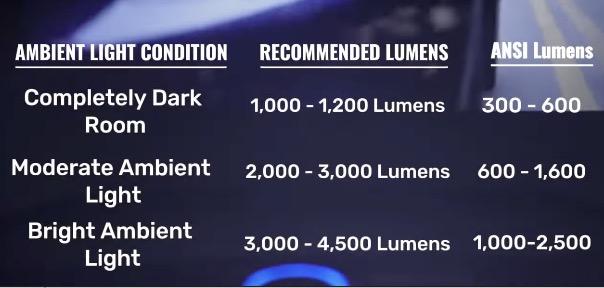
So if you use the projector in rooms with ambient Light, select a projector with higher lumens. Generally, a lumens is a better measure, but most brands do not publish that amongst the projectors compared.
Most low-cost projectors have less than 600 ANSI lumens. So, work best only in completely dark rooms; higher cost projectors work in moderate to high ambient light.
Determines The Picture Quality of Best Projectors
Higher contrast ratio provides better depth, especially in Darker scenes. Amongst the projectors compared, the Samsung Freestyle and the LG Cinebeam Q projectors have the best contrast ratios.
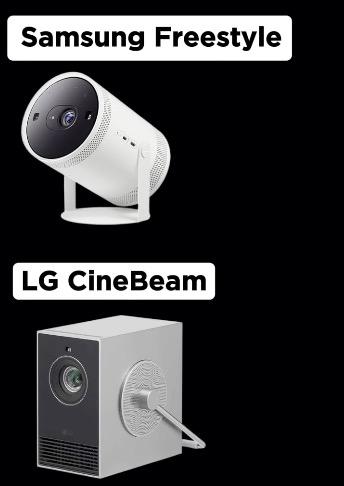
Refresh Rate and Motion Handling
The refresh rate determines how well fast-moving scenes are displayed on the screen. Refresh rates of 60 HZ are sufficient for casual viewing of shows and movies.
Higher refresh rates, upwards of 120 Hz, are better for sports or action-packed games. Slower refresh rates for fast-moving scenes can cause a motion blur.
All projectors compared have a refresh rate of 60 HZ, so you can watch sports and play games with a projector. The Experience can be subpar compared to a TV, especially when you’re viewing it from a short distance.
Smart Features And Connectivity of Best Projectors
Most Best Projectors these days support built-in apps for Netflix, YouTube and so on. So it minimises the need to connect a streaming stick.
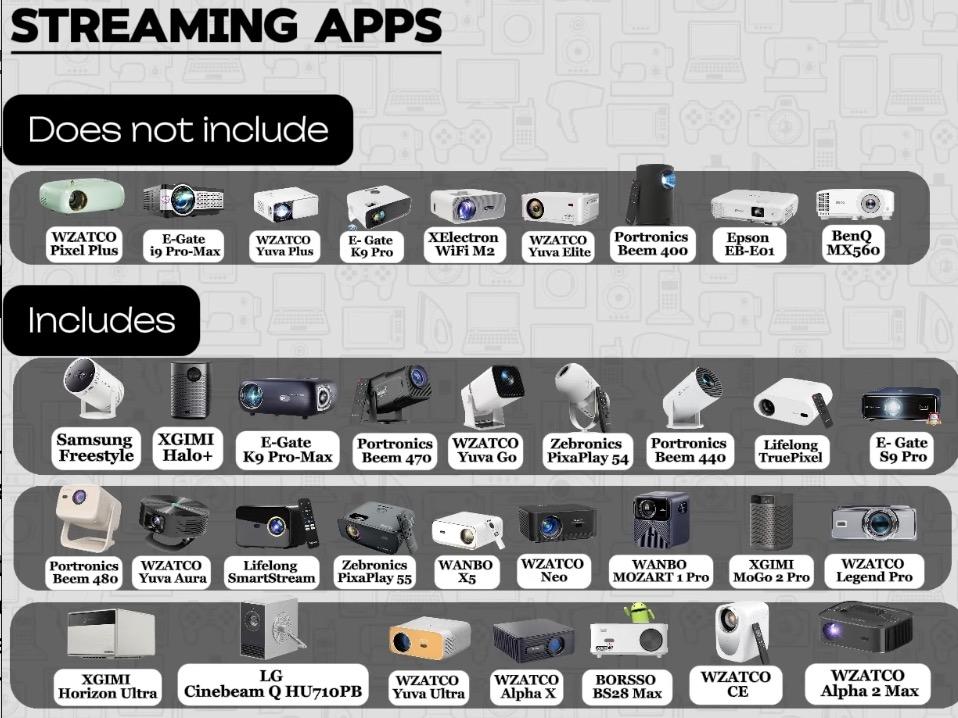
In the given image, you see projectors that do and do not support built-in apps. Most projectors do support Wi-Fi and Bluetooth, which are essential for wireless streaming mirroring from your smartphone and connecting your external speakers wirelessly.
The projectors that you see the given image do not support them, and therefore, you will need an extra Streaming Stick if you do want to stream content using the projector.
HDMI and USB connectivity are available in these projectors for connecting your media players or laptops with a cable. You can also connect your Soundbars using these ports, but in general, having Wi-Fi and Bluetooth with built-in apps is sufficient for most users.
Portability and Design
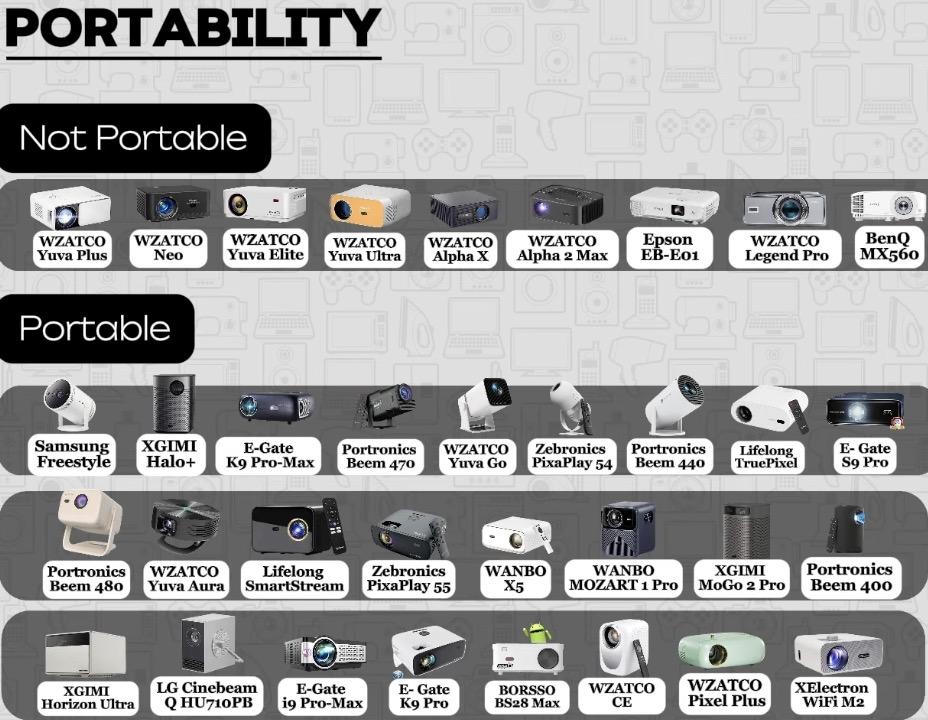
Projectors can be mounted on your ceiling or your wall, or they can be portable. Generally, portable projectors will have a lower configuration at a higher price as the parts need to be miniaturised to make it portable.
So, if you’re sure you do need to move the projector around, go for a portable projector; otherwise, a fixed projector is a better option for you both from a picture quality and a value for money point of view. In the given image, you can see portable projectors and the ones that are not, so you can choose accordingly.
Audio Quality and Sound Options
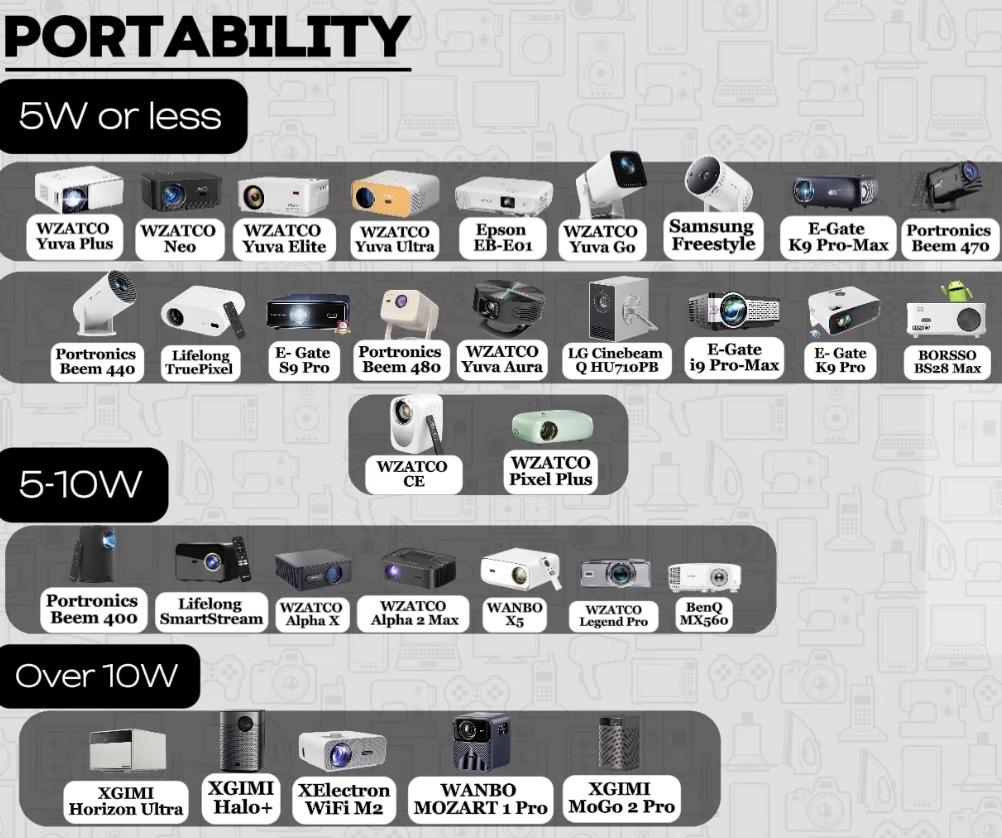
If you think TVs have bad audio quality, projectors are even worse. Most of them have only a sound output of 3 to 5 watts, which is insufficient, except in very small spaces. It is always recommended to supplement with a soundbar or a home theatre system.
Warranty, Lamp Life, and Maintenance Tips for Best Projectors
Entry-level projectors are more affordable but lack resolution brightness or smart capabilities depending on the quality you prefer projectors can range from 10,000 to upwards of a lakh but generally they can cost much lower than buying a really large size TV but they’re only able to give you a similar experience only if you dedicate a dark room for viewing.
Warranty
Warranty in general is one year, and maintenance involves replacing the projector lamps once their active life is over. Generally, projector life is measured in hours. Higher lamp life means less frequent replacement, increasing the cost of the projectors.
Lamp life can be between 10,000 to upwards of 50,000 hours, with LCD projectors having the shortest lamp life, followed by LED projectors, and then the laser projectors being the best with the least maintenance.
If you are watching about 4 hours of content per day, then a projector with a 10,000-hour lamp life will last you close to 7 years. Most projectors offer a life much more than that, so with that.
Best Projectors Under ₹10,000
As pricing increases, picture quality gets better as the projector offers better resolution or better brightness or better contrast at a budget under 10,000. I have two recommendations for you.
The XElectron WiFi M2 Projectors
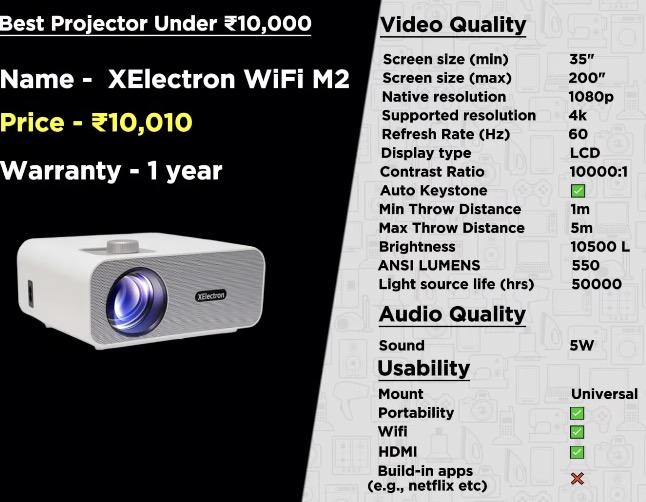
The XElectron WiFi M2, with a 10,000 to 1 contrast ratio and a 1080p native resolution with 4K supported resolution this gives a decent picture quality at this budget. It does include Wi-Fi, Bluetooth and supports streaming from both Android and iOS devices.
This variant cannot stream directly but does need a separate streaming stick to be attached at a slightly higher price. The next variant of this product has the Android OS with various streaming apps included.
The WZATCO Yuva Plus Projectors
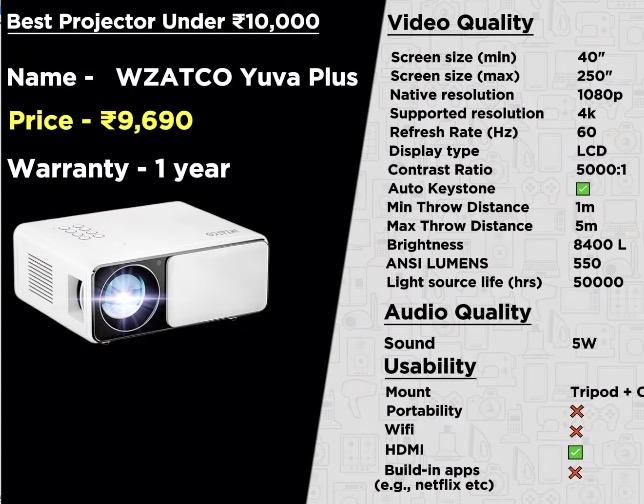
The WZATCO Yuva plus with a 550 lumens ANC brightness and a 5, to1 contrast ratio. This is a good option in the budget segment. Remember, this does not include Wi-Fi and does not support streaming apps. So you will need an extra Streaming Stick along with this projector.
Best Projectors Under ₹25,000
The Borso BS28 Max

The Borso BS28 Max can project up to 300 inches with a 20,000 is to 1 contrast ratio and 940NC lumens. So, it can be used in rooms with moderate ambient light. It also includes Android with major built-in apps for easy streaming directly from the projector, although many users have complained of the built-in Android being slow and lagging and recommend using a streaming stick instead.
The WZATCO Neo Projector
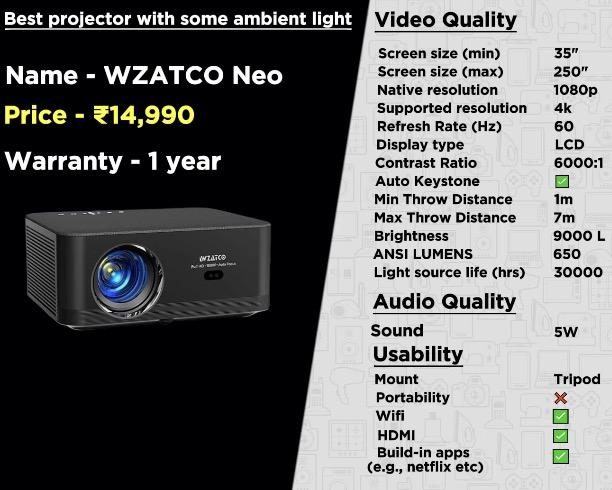
The WZATCO Neo projector can project up to screen sizes of 250 inches with a 1080p native resolution. It has a much better brightness than the two budget models recommended at 650NC lumens. It also includes Android, so streaming directly from the projector is possible easily.
Best 4K Projectors in 2025 for Home Theatre
The LG Cinebeam Q
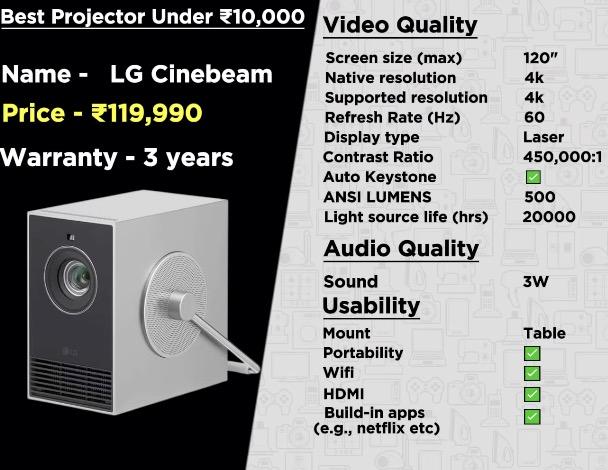
The LG Cinebeam Q that you see in the image. This is a 4K laser projector with an outstanding contrast ratio of 41/2 lakhs is into one.
It includes LG’s webOS for streaming and autofocus, and auto screen adjustment as well. This product comes closest to TV quality but has a limited brightness of 500 ANC lumens. So it is ideal for home theatre rooms where lighting can be closely controlled.
Final Verdict — Which Best Projectors Should You Buy in 2025?
Projectors in 2025 offer a versatile solution for home entertainment, providing screen sizes up to 300 inches for a true cinematic feel. While they shine in controlled lighting, their performance in bright rooms and for fast-paced content may lag behind TVs. Key considerations include resolution (1080p or 4K), brightness (measured in ANSI lumens), contrast ratio, and smart features like built-in streaming apps.
Budget options like the XElectron Wi-Fi M2 and WZATCO Yuva Plus deliver solid performance under ₹10,000, while the Borso BS28 Max and WZATCO Neo cater to mid-range needs under ₹25,000.
For premium 4K quality, the LG CineBeam Q stands out with its high contrast and smart features, ideal for dedicated home theatres. Choose a projector based on your room’s lighting, viewing preferences, and budget for an unparalleled big-screen experience.
If you found this article useful, share this article and leave a comment below that trusts us with their decision-making. Thank you for visiting our website.
Disclaimer: Some links are affiliate links, which may earn me a small commission at no extra cost to you. 😊 Check: Affiliate Disclosure Page. and check our another social media acocunt: Click Here.
